Wolfram Function Repository
Instant-use add-on functions for the Wolfram Language
Function Repository Resource:
Generate a graph giving the relations between regions of causally equivalent events in a causal graph
ResourceFunction["CausalConnectionGraph"][cgf,ti,tf] generates a graph of relations between causally equivalent regions that are detected at step ti in the causal graph generated by cgf, as determined by outcomes at step tf. | |
ResourceFunction["CausalConnectionGraph"][cgf,{ti1,ti2},{tf1,tf2}] considers regions detected between steps ti1 and ti2, with outcomes determined by looking at steps tf1 through tf2. | |
ResourceFunction["CausalConnectionGraph"][cg,{vi1,…},{vf1,…}] generates the causal connection graph from the causal graph cg by considering causally equivalent regions among the event nodes vik, as determined by looking at the event nodes vfk. | |
ResourceFunction["CausalConnectionGraph"][c,i,f,"Full"] gives the full causal connection graph for every event, not aggregating causally equivalent events. |
| ResourceFunction[“SubstitutionSystemCausalGraph”][rules,init, #] & | string substitution system |
| ResourceFunction[“WolframModel”][rules,init, #, “CausalGraph”] & | Wolfram model |
Generate a causal graph:
| In[1]:= |
|
| Out[1]= |
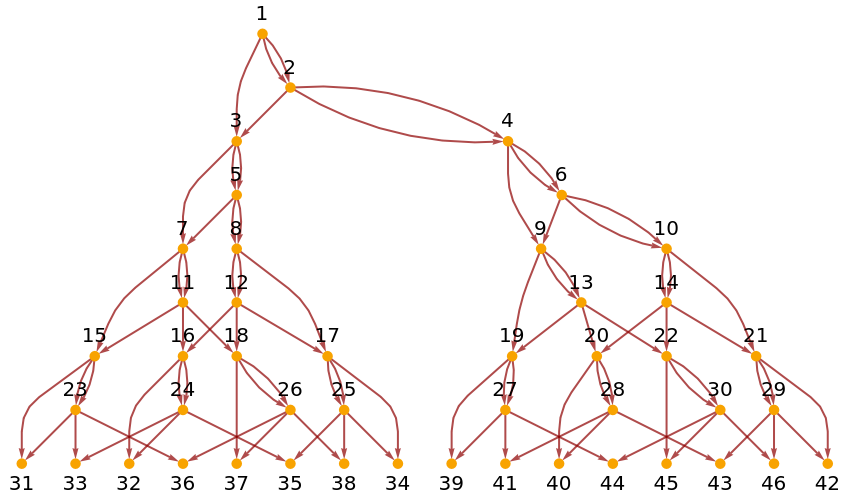
|
Find the causal connection graph for events at step 3 (there are just two "subuniverses" in this case):
| In[2]:= |
![Graph[ResourceFunction["CausalConnectionGraph"][
ResourceFunction[
"WolframModel"][{{1, 2}, {2, 3}} -> {{2, 3}, {3, 1}, {4, 1}}, Automatic, #, "LayeredCausalGraph"] &, 3, 9], VertexLabels -> Automatic]](https://www.wolframcloud.com/obj/resourcesystem/images/db1/db15497b-6819-4b98-8f25-431c838f3ec4/2758d98636b83109.png)
|
| Out[2]= |
|
Find the corresponding result for events at step 5:
| In[3]:= |
![Graph[ResourceFunction["CausalConnectionGraph"][
ResourceFunction[
"WolframModel"][{{1, 2}, {2, 3}} -> {{2, 3}, {3, 1}, {4, 1}}, Automatic, #, "LayeredCausalGraph"] &, 5, 11], VertexLabels -> Automatic]](https://www.wolframcloud.com/obj/resourcesystem/images/db1/db15497b-6819-4b98-8f25-431c838f3ec4/5978818c01f50874.png)
|
| Out[3]= |
|
Generate the causal connection graph for a “black hole”, where the future of a1 contains the future of a2, but not the other way around:
| In[4]:= |
|
| Out[4]= |
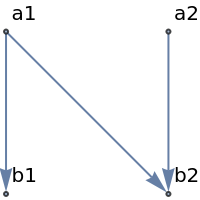
|
| In[5]:= |
|
| Out[5]= |
|
Cases with undirected edges:
| In[6]:= |
|
| Out[6]= |
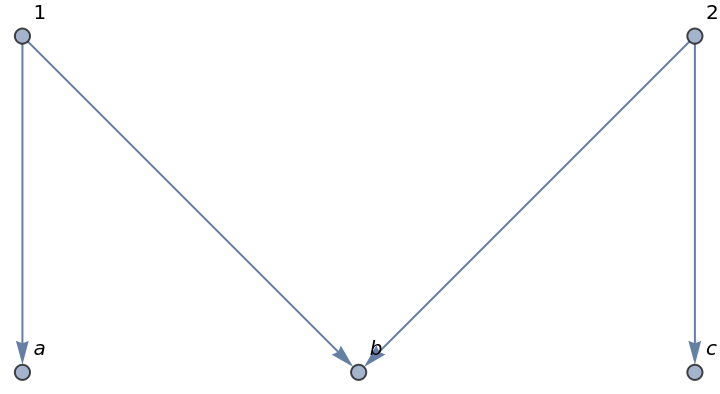
|
| In[7]:= |
|
| Out[7]= |
|
Another example:
| In[8]:= |
|
| Out[8]= |
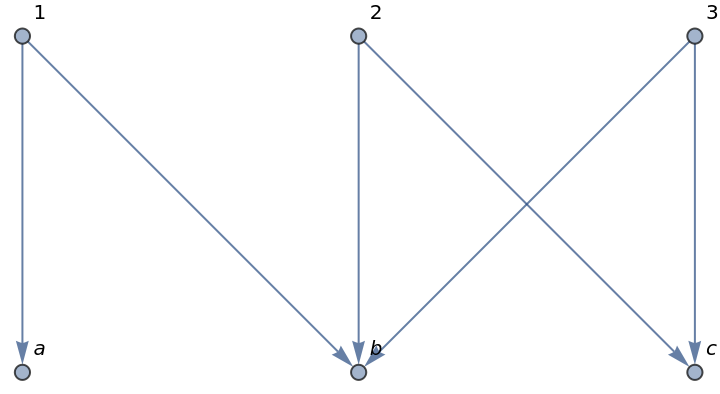
|
| In[9]:= |
|
| Out[9]= |
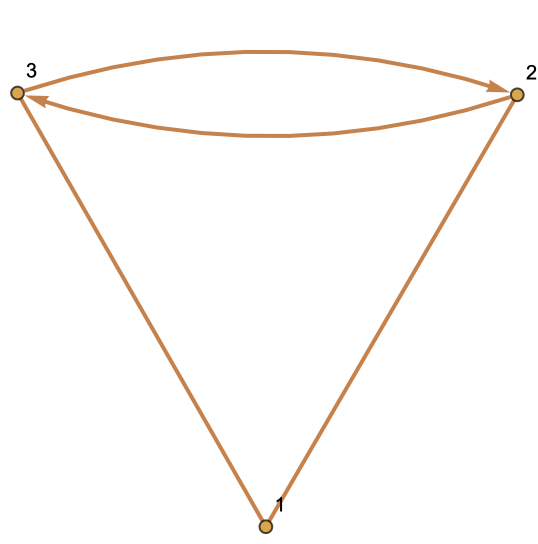
|
This work is licensed under a Creative Commons Attribution 4.0 International License